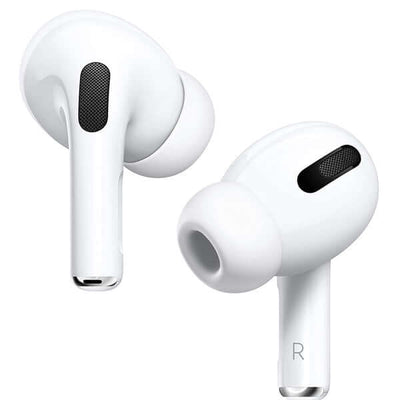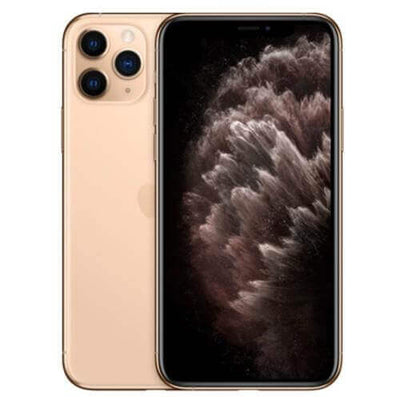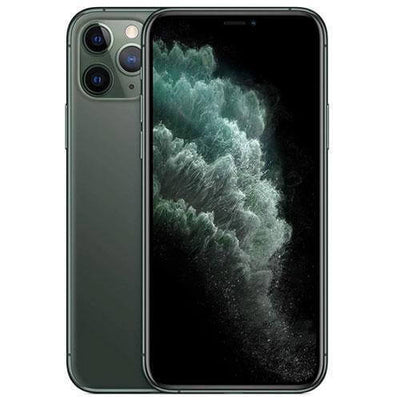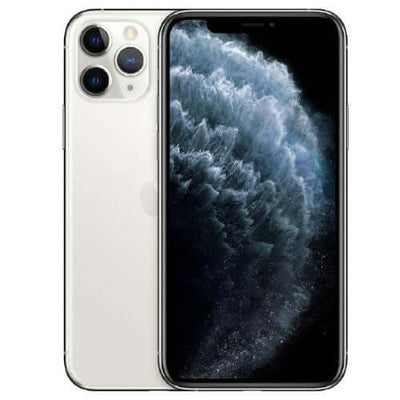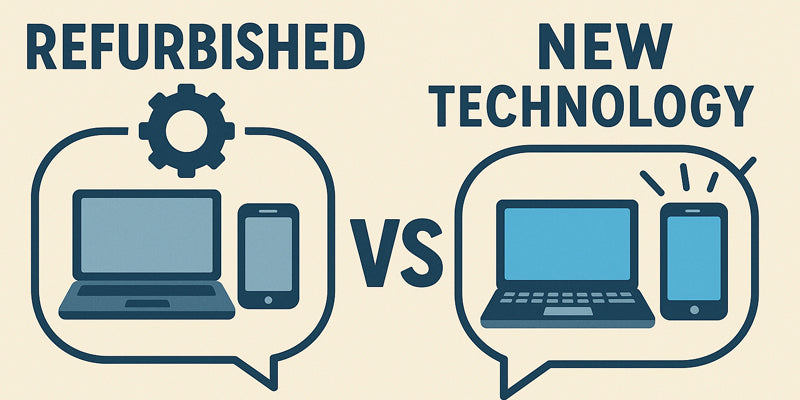Exploring Sustainable Choices in Tech Market
In the age of environmental consciousness, more consumers are asking: refurbished vs. new technology, which option is better for sustainability? As electronic waste surges and the planet faces resource depletion, choosing between refurbished vs. new technology has never been more important. Every gadget we buy has an impact on the environment, making the debate on refurbished vs. new technology both timely and critical. This blog explores how your tech choices affect the planet and whether refurbished vs. new technology can truly support a greener, more sustainable future in the digital age.
What Does Refurbished Technology Really Mean?
The refurbished vs. new technology becomes interesting when we know what it means to be refurbished. Refurbished devices are those used electronics, which are repaired, cleaned, tested, and again resold. Most of them are almost indistinguishable from new gadgets; especially if they are certified by the manufacturer. The unique thing about refurbished and new technology is the reduced price and its environmental footprint. Life Extension of an existing product reduces the demand for raw materials. Refurbished vs new technology: the refurbished option contributes to lowering the electronic waste as well as saves the natural resources.
Environmental Impact: Reducing E-Waste Matters
One of the key aspects driving consumers towards refurbished options as opposed to completely new devices is the strong desire to mitigate the effects of e-waste. E-waste is one of the fastest-growing forms of global waste, with millions of tons created per annum. When weighing refurbished technology against new technology, refurbished devices come out looking more environmentally friendly. In another way of looking at it, a third point usually put forth in arguments for refurbished vs. new is that refurbished devices prevent about 80% of the carbon dioxide emissions associated with new manufacturing. Now that's truly sustainable!
-
Refurbished vs. new technology is a key concern for reducing global electronic waste, which has reached alarming levels.
-
Choosing refurbished vs. new technology helps reduce the need for raw material extraction, lowering carbon emissions.
-
The production of new devices consumes energy, water, and rare minerals—issues that refurbished vs. new technology choices can help address.
-
By supporting refurbished vs. new technology, consumers extend product life cycles and contribute to a circular economy model.
Cost-Effectiveness and Longevity in the Real World
Price is a great motivator in the decision-making process between refurbished versus new technology. Refurbished tech products cost significantly less; sometimes up to 50% less than new ones. Some people think that refurbished gadgets seldom last long, while many do last as long as a new device. Marketed by trustworthy sellers, refurbished tech is an earnest player in the refurbished versus new-tech arena today. With fast software updates and good specs, refurbished versus new shows a slight difference in real-life usage today. A well-maintained refurbished phone or laptop can serve its purpose healthily for years. For eco-minded consumers, the case of refurbished versus new technology favors sustainability as well as price.
-
Refurbished vs. new technology shows a clear cost advantage—refurbished devices are often 30–50% cheaper than new ones.
-
In real usage, refurbished vs. new technology offers similar performance and lifespan, especially when bought from certified sellers.
-
For budget-conscious buyers, refurbished vs. new technology allows access to premium features at lower prices.
-
Many refurbished gadgets come with warranty and support, reducing the risk when choosing refurbished vs. new technology.
Manufacturer Practices and Ethical Consumption
Most importantly, the refurbished vs. new technology debate touches on another aspect: brand responsibility. Major tech giants have implemented certified refurbished programs into their designs, which is a move towards a circular economy. Today, ethical shoppers look even more at brands that advocate sustainability. Refurbished vs. new technology should also include supply chain ethics in the assessment process. New devices might have different unethical labor or conflict minerals. Refurbished versus new technology-related consumption patterns support slow and more mindful consumption cycles. By going refurbished, customers will reward companies focused on sustainable, ethical labor, and living longer product life cycles.
-
Refurbished vs. new technology highlights how manufacturers are adapting to sustainability demands.
-
Many brands now offer certified refurbished devices, making refurbished vs. new technology more ethical and eco-friendly.
-
Choosing refurbished vs. new technology supports companies focusing on ethical labor and reduced environmental harm.
-
The shift in brand responsibility reflects the growing importance of refurbished vs. new technology in ethical consumer decision-making.
Performance and Warranty—Is Refurbished Risky?
When refurbished vs. new gadgets are kept in the middle, users think about performance issues. New devices are normally taken to be better in performance and have a longer lifespan. But quality refurbished tech usually comes with warranty, performance tests, and return policies. As technology advances, the gap between refurbished and new technology is narrowing, especially for the average consumer. Most smartphones can run perfectly for years with mere updating. In reality, refurbished versus new technology is not risky anymore; in some fact, many refurbished devices actually are at par with their new counterparts.
Conclusion: The Sustainable Choice is Clear
So, refurbished vs. new technology: which one is better for sustainability? The answer points toward refurbished tech. It reduces electronic waste, conserves resources, and encourages ethical consumption—without compromising performance. With warranties and certified resellers, refurbished devices are no longer a gamble. Choosing refurbished technology supports environmental goals and helps consumers save money. Refurbished vs. new technology isn’t just about price—it’s about responsibility. As we move toward a greener future, the choice is clear: refurbished devices are the more sustainable solution for modern consumers.
Frequently Asked Questions
Q.1. Is refurbished technology reliable?
Yes, refurbished devices go through strict testing, and many come with warranties, making them as reliable as new products.
Q.2. Does refurbished tech help reduce e-waste?
Absolutely. Refurbished gadgets reduce the demand for new manufacturing and keep devices out of landfills.
Q.3. Is there a big price difference in refurbished vs. new technology?
Yes, refurbished products are often 30–50% cheaper than their new counterparts, offering excellent value for money.
Q.4. Can I get a warranty on refurbished devices?
Yes, many refurbished products include warranties from sellers or manufacturers, ensuring safe usage.
Q.5. Is refurbished tech good for the environment?
Yes, refurbished devices reduce carbon emissions, resource consumption, and electronic waste, making them a sustainable choice.
